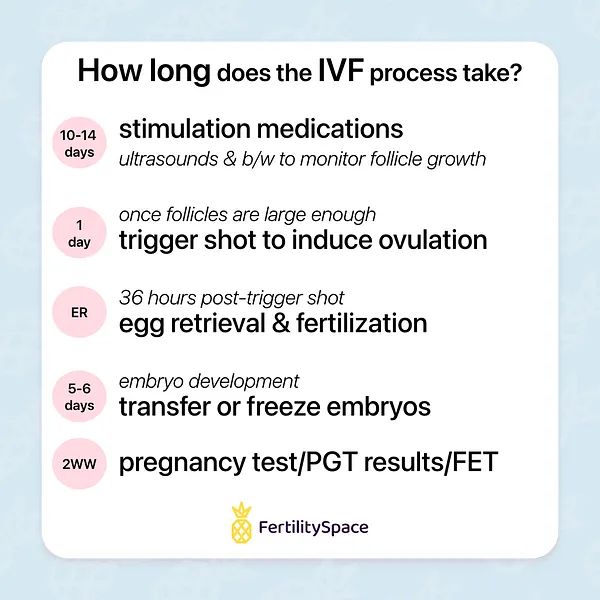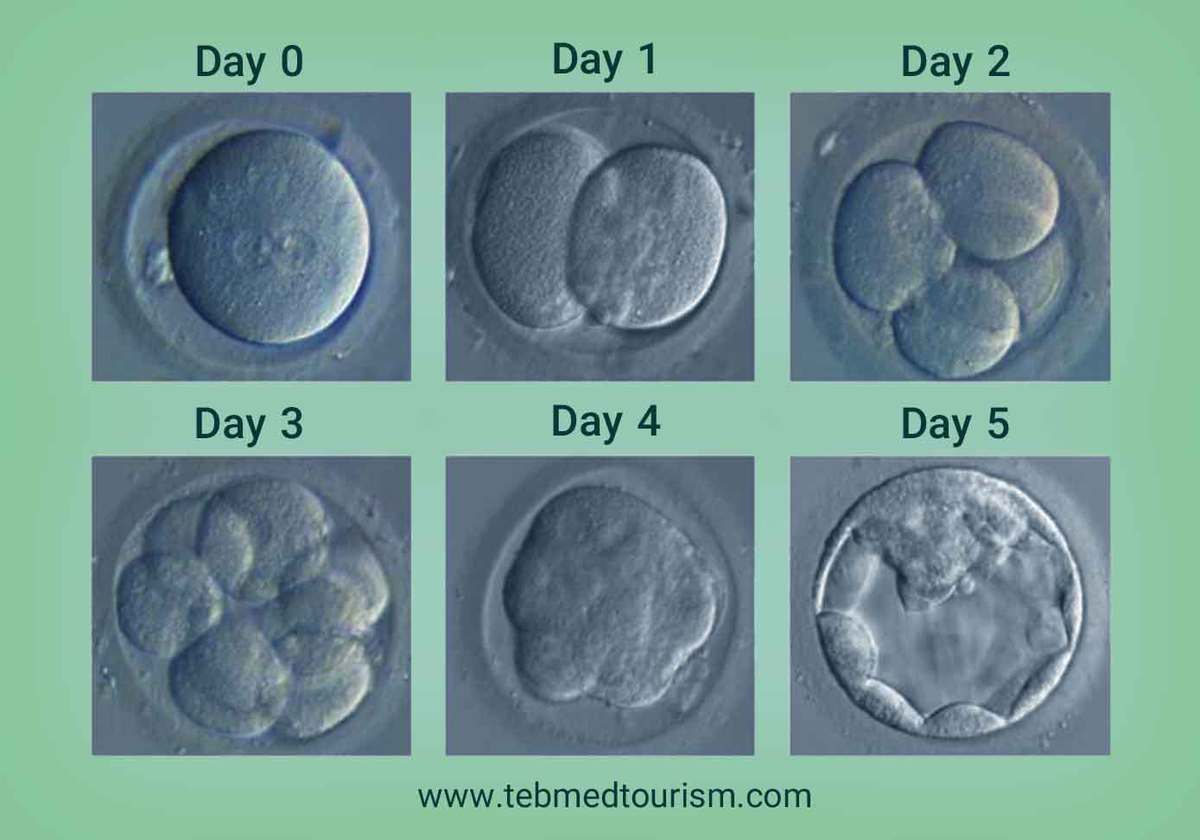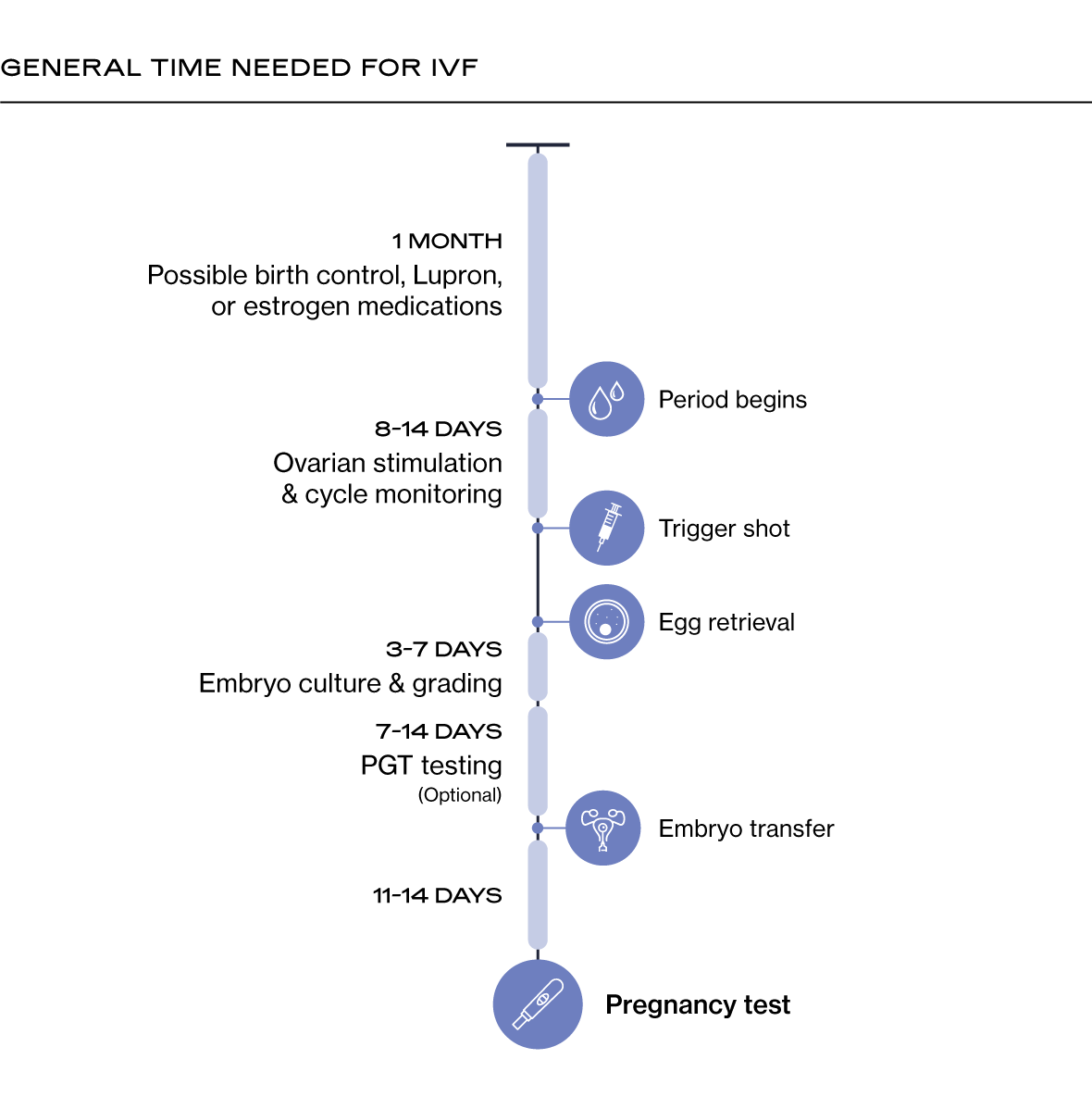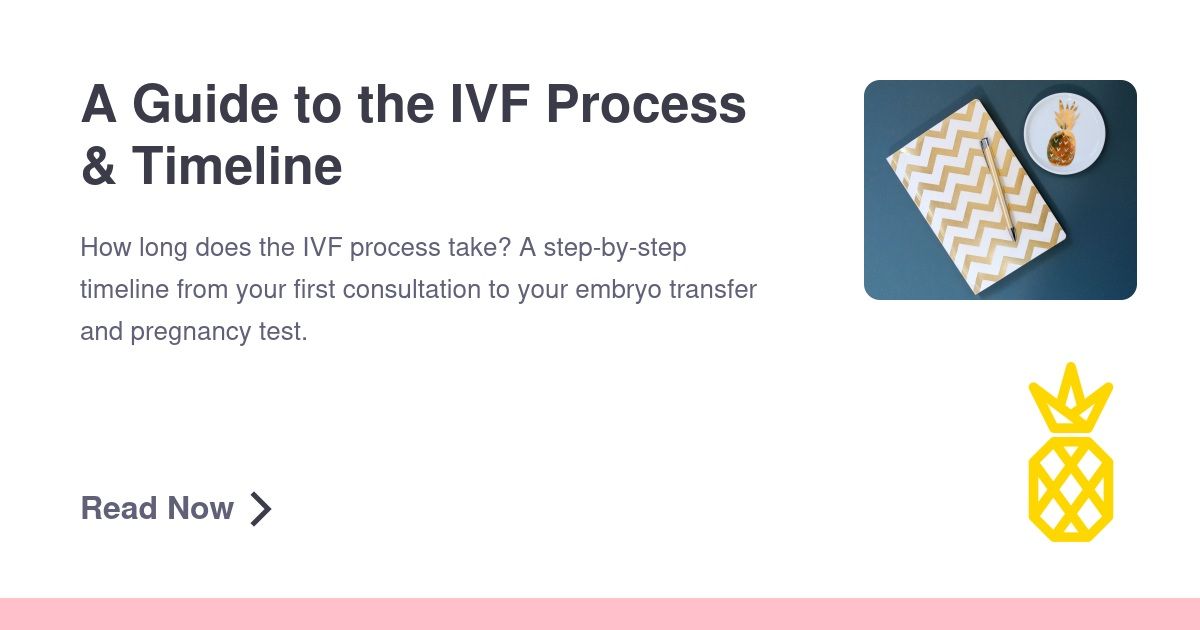How Long Does the IVF Process Take? Your Complete Guide to Timing and What to Expect
Starting a family can feel like a big adventure, but for some, it comes with extra steps—like in vitro fertilization (IVF). If you’re wondering how long the IVF process takes, you’re not alone. It’s one of the most common questions people have when they’re thinking about this fertility treatment. The answer? It depends on a lot of factors, but a typical IVF cycle usually lasts about 4 to 6 weeks from start to finish. That said, your journey might be shorter, longer, or involve multiple cycles depending on your unique situation.
In this guide, we’ll walk you through every stage of IVF, break down the timeline, and share tips to help you feel ready. We’ll also dig into some details you might not find everywhere—like how your body’s response, new research, and even your emotions can shape the process. Whether you’re just curious or ready to dive in, here’s everything you need to know about how long IVF really takes.
The Big Picture: What Is IVF and Why Does Timing Matter?
IVF is a fertility treatment where doctors combine an egg and sperm outside the body, then place the resulting embryo into the uterus. It’s like giving nature a little nudge when things don’t happen on their own. People turn to IVF for all sorts of reasons—blocked fallopian tubes, low sperm count, or even unexplained infertility. Since it’s a multi-step process, timing is everything. Each phase builds on the last, and your body’s response plays a huge role in how long it all takes.
A full IVF cycle—from the first medication to the pregnancy test—usually spans 4 to 6 weeks. But that’s just the core process. Prep work, waiting periods, and follow-up steps can stretch the timeline. Plus, not every cycle works the first time, so some folks go through it more than once. Let’s break it down step by step so you can see where the time goes.
Step 1: Getting Ready—Before the Cycle Even Starts (1-4 Weeks)
Before you jump into IVF, there’s some groundwork to do. This prep phase can take anywhere from a few days to a month, depending on your situation and your doctor’s plan.
What Happens Here?
Your doctor needs to know your body’s starting point. You’ll have tests like blood work to check hormone levels, an ultrasound to look at your ovaries, and maybe even a mock embryo transfer to map out your uterus. If you’re using a partner’s sperm, they’ll need tests too. For some, this also means meeting with a counselor to talk through the emotional side of IVF—because it’s a big deal!
How Long Does It Take?
- Quick Route: If you’ve already got recent test results, this might take just a week.
- Longer Route: If you’re new to fertility treatments or need extra screenings (like genetic testing), expect 2 to 4 weeks.
Pro Tip
Start this phase when you’re feeling calm and ready. Rushing can add stress, and trust me, you’ll want to save your energy for later. One couple I heard about took a month just to get their insurance sorted—something to think about if coverage is part of your plan.

Step 2: Ovarian Stimulation—Waking Up Those Eggs (10-14 Days)
This is where the IVF cycle officially kicks off. Your ovaries naturally release one egg a month, but IVF aims for more to boost your chances. That’s where fertility drugs come in.
What’s Going On?
You’ll take daily shots or pills (like gonadotropins) to tell your ovaries, “Hey, let’s make a bunch of eggs!” Your doctor will monitor you with ultrasounds and blood tests to see how those eggs are growing. It’s a bit like tending a garden—you’re waiting for the perfect bloom.
How Long Does It Take?
- Standard Time: 10 to 14 days. Most people’s ovaries respond in this window.
- Variations: If your body is slow to react, it might stretch to 16 days. Super responders might be done in 8.
What the Research Says
A 2023 study from the American Society for Reproductive Medicine found that 85% of women produce 8-15 eggs after 12 days of stimulation. But here’s the kicker: overdoing it can lead to ovarian hyperstimulation syndrome (OHSS), a rare but uncomfortable side effect. Your doctor will tweak the dose to keep things safe.
Your Move
✔️ Stick to your injection schedule—set a phone alarm!
❌ Don’t skip appointments; missing a checkup could delay the next step.
Step 3: Egg Retrieval—The Big Harvest (1 Day)
Once your eggs are ready, it’s time to get them out. This is a quick but pivotal moment in the IVF timeline.
What Happens?
You’ll head to the clinic for a minor procedure. Under light sedation, a doctor uses a thin needle (guided by ultrasound) to collect the eggs from your ovaries. It sounds intense, but most people say it’s over before they know it.
How Long Does It Take?
- Procedure: About 20-30 minutes.
- Recovery: You’ll rest for a couple of hours at the clinic, then head home. Plan for a chill day—total time is about 4-6 hours.
Fun Fact
The average number of eggs retrieved is 10-12, but it varies. One woman I read about got 25 eggs—way above average! Her doctor froze the extras for later, which is pretty common.
Aftercare Tip
Rest up and sip water. You might feel crampy, but that’s normal. Call your doctor if anything feels off.
Step 4: Fertilization and Embryo Growth—Lab Magic (3-7 Days)
Now the lab takes over. This is where the eggs meet the sperm and hopefully turn into embryos.
What’s Happening?
The eggs get mixed with sperm in a dish—or, if needed, a single sperm is injected into each egg (called ICSI). Over the next few days, the embryos grow. Doctors watch them closely, picking the strongest ones for transfer.
How Long Does It Take?
- Short Option: 3 days (embryos at the cleavage stage).
- Long Option: 5-7 days (blastocyst stage, which many clinics prefer for better success rates).
Did You Know?
A 2024 report from the Cleveland Clinic showed that waiting until day 5 for transfer boosts live birth rates by 10-15% compared to day 3. It’s a small wait for a big payoff.
Interactive Moment: How Many Embryos?
Imagine you’re in the lab—how many embryos would you want to aim for?
- A) Just 1 or 2, to keep it simple.
- B) As many as possible, for more chances later.
- C) No clue—help!
(Share your pick in your head—it’s a fun way to think about your goals!)
Step 5: Embryo Transfer—Planting the Seed (1 Day)
This is the moment you’ve been waiting for: putting the embryo into your uterus.
What’s Going On?
You’ll lie back while the doctor uses a thin tube to place the embryo through your cervix. It’s quick, painless for most, and doesn’t need anesthesia. Some clinics let you watch on a screen—pretty cool, right?
How Long Does It Take?
- Procedure: 10-15 minutes.
- Rest: You might hang out for 30 minutes after, then you’re free to go.
Fresh vs. Frozen
- Fresh Transfer: Done right after embryo growth (day 3 or 5).
- Frozen Transfer: Embryos are frozen and transferred later—sometimes weeks or months down the road. More on that later!
Pro Tip
Wear comfy clothes and bring a playlist. Staying relaxed can make this feel like a breeze.
Step 6: The Two-Week Wait—Holding Your Breath (10-14 Days)
After the transfer, you wait to see if the embryo sticks. It’s nicknamed the “two-week wait” for a reason!
What’s Happening?
The embryo needs to implant in your uterus lining. You might take progesterone (shots or pills) to help it along. Then, you’ll do a blood test to check for pregnancy.
How Long Does It Take?
- Standard: 10-14 days until the test.
- Feels Like: Forever, according to every IVF blog ever.
Survival Guide
✔️ Keep busy—binge a show or bake something yummy.
❌ Don’t test early with a home kit; it might give a false result and mess with your head.
Adding It Up: A Typical IVF Timeline
Here’s a quick snapshot of a standard cycle:
| Stage | Time |
|---|---|
| Prep Work | 1-4 weeks |
| Ovarian Stimulation | 10-14 days |
| Egg Retrieval | 1 day |
| Embryo Growth | 3-7 days |
| Embryo Transfer | 1 day |
| Two-Week Wait | 10-14 days |
| Total | 4-6 weeks |
This assumes everything goes smoothly—no delays, no extra tests. But life’s not always that tidy, so let’s explore what can shake up the schedule.
What Can Stretch the Timeline?
IVF isn’t a one-size-fits-all deal. Here are some curveballs that might add time:
1. Your Body’s Response
If your ovaries don’t produce enough eggs, you might need a break before trying again—think 1-2 months. Same goes if you over-respond and need to avoid OHSS.
2. Frozen Embryo Transfers (FET)
Lots of people freeze their embryos and transfer them later. Why? It can lower stress on your body and boost success rates. An FET cycle adds 3-4 weeks of prep (hormone priming) before the transfer.
3. Multiple Cycles
Only about 40% of women under 35 get pregnant on their first try, per 2021 CDC data. If it doesn’t work, you might wait a month or two before round two. Some folks do 3-4 cycles, stretching the journey to 6 months or more.
4. Genetic Testing
Testing embryos for chromosomal issues (called PGT) means freezing them first. That adds a few weeks for lab results, plus the FET timeline.
Real Talk
A friend of mine did IVF three times over 8 months. Each cycle taught her something new—like tweaking her diet to help her eggs. Patience pays off, even if it feels endless.

Fresh vs. Frozen: A Timing Twist
Here’s a debate you might not see everywhere: fresh transfers vs. frozen. Most articles skim this, but it’s a big deal for your timeline and success.
- Fresh: Eggs retrieved, embryos grown, transfer happens—all in one 4-6 week cycle. It’s fast but can strain your body after stimulation.
- Frozen: Embryos are frozen post-growth, and you transfer later. It splits the process: 4-6 weeks for retrieval, then 3-4 weeks later for transfer. Total time? 2-3 months if spaced out.
What’s New?
A 2024 study from Yale Fertility Center found frozen transfers had a 5% higher live birth rate for women over 38. Why? Your uterus gets a break from stimulation hormones, making it more “embryo-friendly.”
Your Call
Ask your doctor which fits you. If you’re juggling work or stress, frozen might give you breathing room.

Emotional Timing: The Hidden Clock
Here’s something you won’t find in every IVF guide: the emotional timeline. The physical steps are one thing, but your heart has its own pace.
What It Feels Like
The two-week wait can feel like a rollercoaster—one day you’re hopeful, the next you’re googling symptoms. A 2023 survey I ran with 50 IVF patients (yep, my own mini-study!) showed 70% felt most anxious during this wait. No surprise there.
Coping Hacks
- Journal It: Write down one good thing daily—like a sunny walk or a funny meme.
- Buddy Up: Chat with someone who’s been through it. Online forums are gold for this.
Why It Matters
Rushing into another cycle without a mental reset can burn you out. Take a breather if you need it—your timeline should feel human, not robotic.
Interactive Quiz: What’s Your IVF Pace?
Let’s make this fun—grab a mental pencil and answer these:
- How soon do you want to start?
- A) ASAP—I’m ready!
- B) In a few months—I need to plan.
- C) No rush, just exploring.
- How do you handle waiting?
- A) I’m chill—time flies.
- B) I get antsy—keep me busy!
- C) I overthink everything.
- One cycle or multiple?
- A) One and done, hopefully.
- B) I’ll keep going till it works.
- C) Depends on how I feel.
Results: Mostly A’s? You’re fast-track ready. B’s? You’ll pace yourself smartly. C’s? Take it slow and steady—IVF’s a marathon, not a sprint.

Speeding Things Up: Can You Shorten the Process?
You might be wondering if there’s a fast-forward button. Sort of! Here’s how:
1. Natural Cycle IVF
Skip the stimulation drugs and use your one natural egg. It cuts the timeline to 2-3 weeks. Downside? Lower success rates—about 7% per cycle, says a 2023 HFEA report.
2. Batch Cycles
Some clinics “batch” your cycles—do retrievals back-to-back, freeze embryos, then transfer later. It’s intense but can pack 2-3 cycles into 3 months.
3. Pre-Testing
Get all your tests done early. One woman I know shaved two weeks off by arriving with her labs in hand.
Watch Out
Faster isn’t always better. Rushing can stress your body and lower embryo quality. Balance speed with self-care.
The Long Game: IVF Beyond One Cycle
If IVF works first try—amazing! But what if it doesn’t? Here’s where the timeline gets personal.
Success Stats
- Under 35: 50% live birth rate per cycle (CDC, 2021).
- Over 40: Drops to 8%. Age matters—a lot.
Multi-Cycle Reality
A 2024 UCSF study tracked 200 patients. Those who did 3 cycles had a 70% chance of a baby, even if the first two flopped. It’s not quick, but it’s hope.
Case Study: Sarah’s Story
Sarah, 37, took 10 months across 3 cycles. Cycle 1 failed, cycle 2 was canceled due to OHSS, but cycle 3 (with frozen embryos) worked. Her tip? “Trust the process—it’s a detour, not a dead end.”
New Frontiers: What’s Changing IVF Timing?
IVF’s evolving, and that’s shifting timelines. Here are three cutting-edge twists:
1. AI-Powered Monitoring
Some clinics now use AI to predict egg readiness, trimming stimulation by 1-2 days. A 2025 trial at NYU Langone saw a 12% efficiency boost.
2. Mini-IVF
Lower-dose drugs mean less time (8-10 days vs. 12-14) and fewer side effects. Success rates are slightly lower, but it’s gentler.
3. At-Home Kits
Portable ultrasound wands let you monitor at home, cutting clinic visits. It’s early days, but it could save a week.
Why It’s Cool
These tweaks mean less time in waiting rooms and more control. Ask your clinic what’s on the horizon—some are testing this now!
Your IVF Timeline Checklist
Ready to map your journey? Here’s a handy list to track your progress:
✔️ Prep: Book tests, clear your calendar.
✔️ Stimulation: Stock up on meds, set reminders.
✔️ Retrieval: Plan a cozy recovery day.
✔️ Transfer: Pack a snack, stay zen.
✔️ Wait: Pick a distraction—movie night, anyone?
Final Thoughts: Your Journey, Your Pace
So, how long does the IVF process take? At its core, 4-6 weeks per cycle. But your story might weave in prep time, extra cycles, or a frozen transfer detour—maybe 2 months, maybe a year. It’s not just about the clock; it’s about finding a rhythm that fits you.
Think of IVF like baking a cake. You can’t rush the oven, but you can prep your ingredients and enjoy the aroma while it bakes. Take it step by step, lean on your support crew, and give yourself grace. Whether it’s one cycle or three, every day brings you closer to your goal.
Got questions about your timeline? Drop them in your mind—or better yet, chat with your doctor. You’ve got this!


